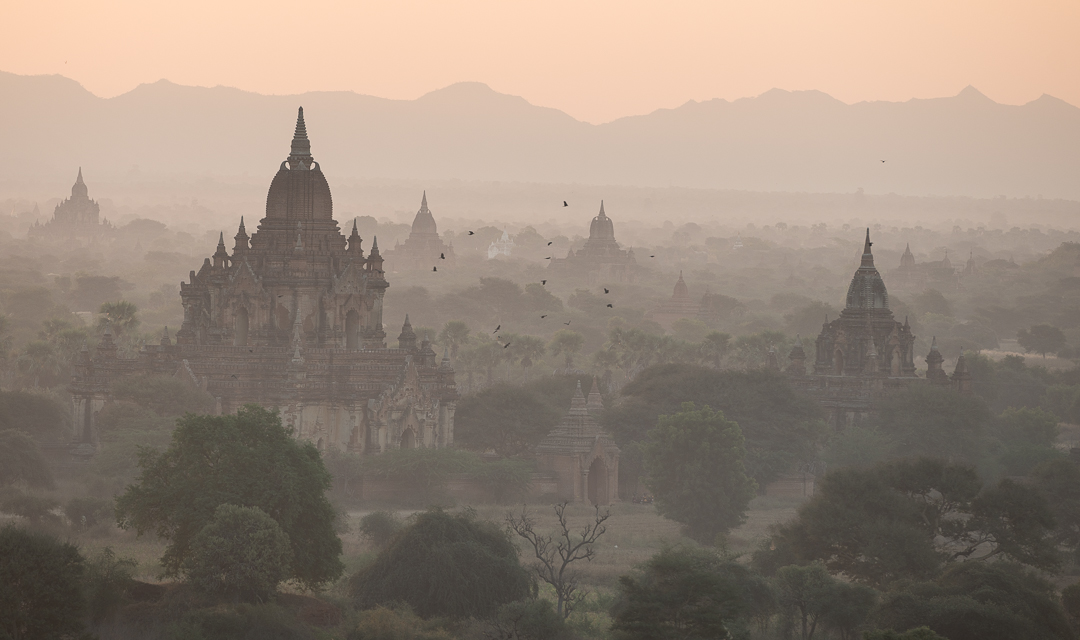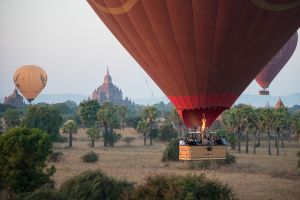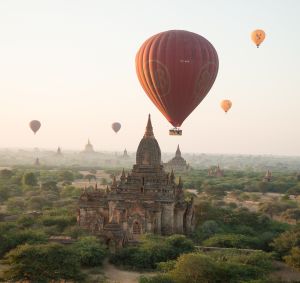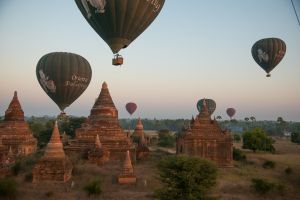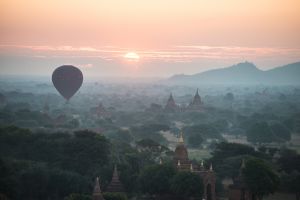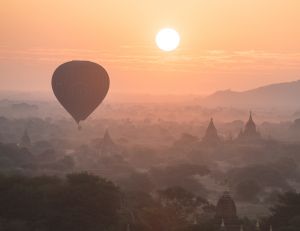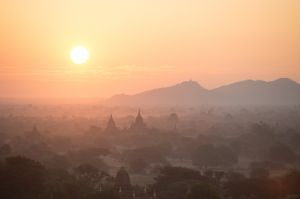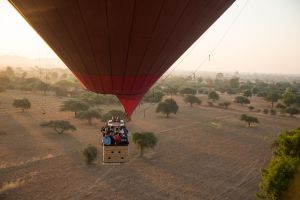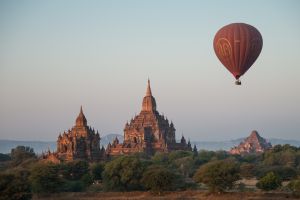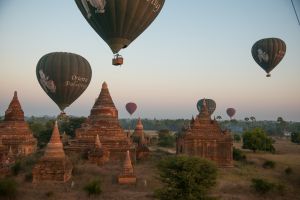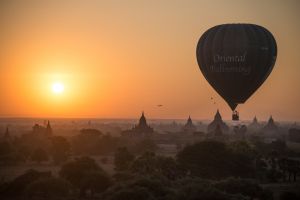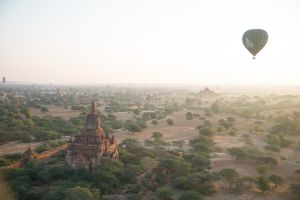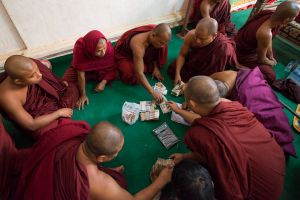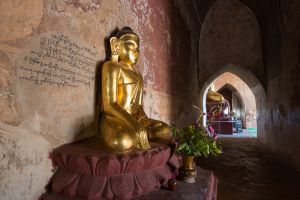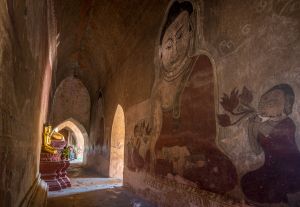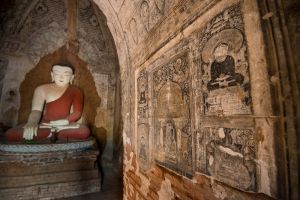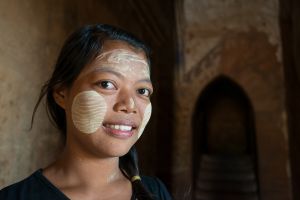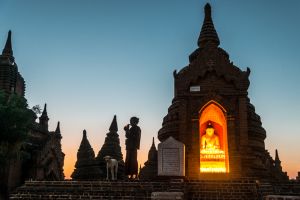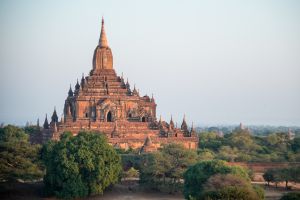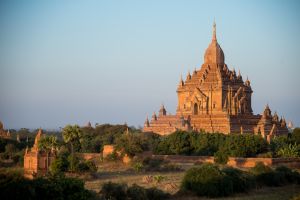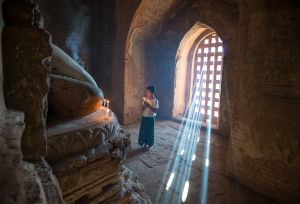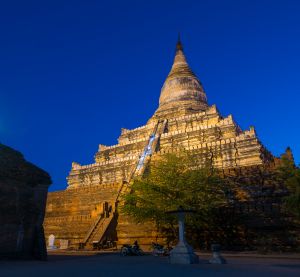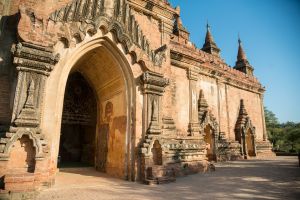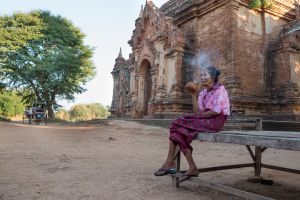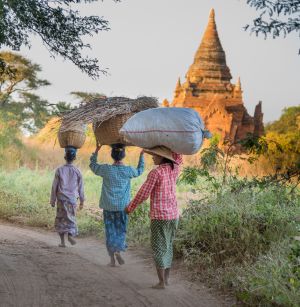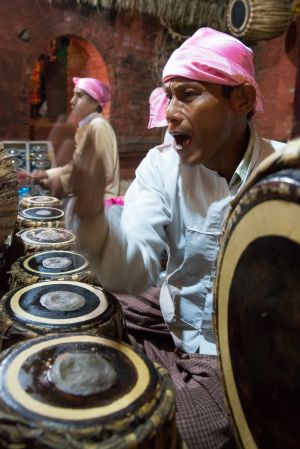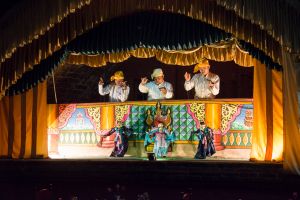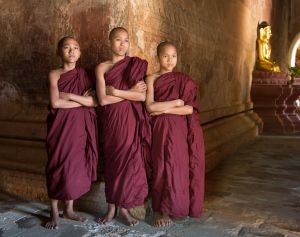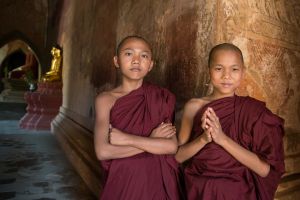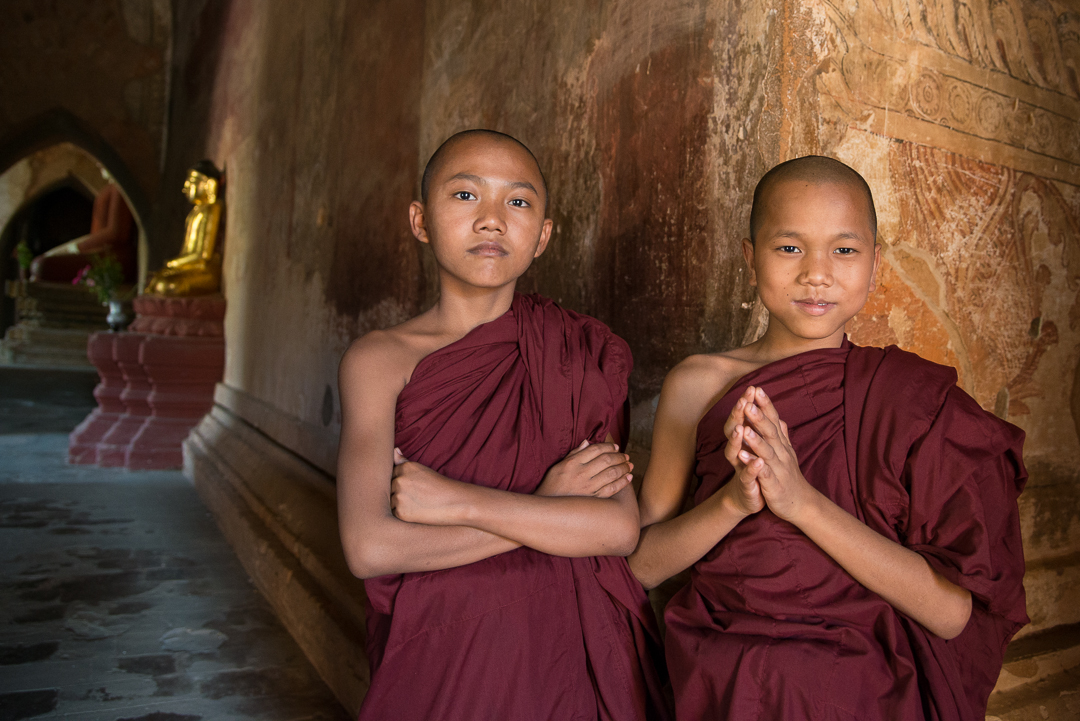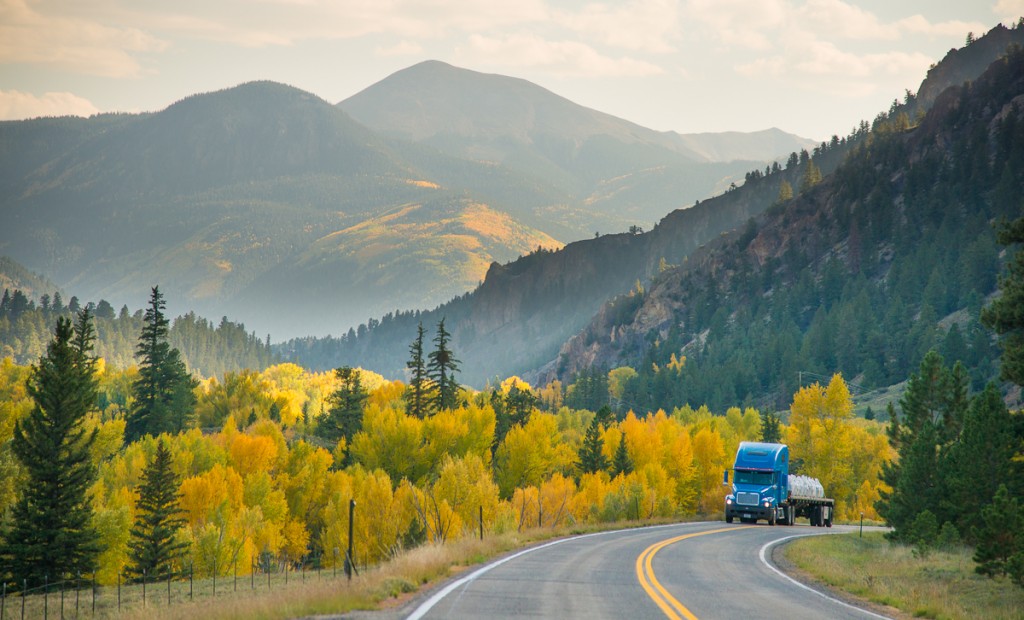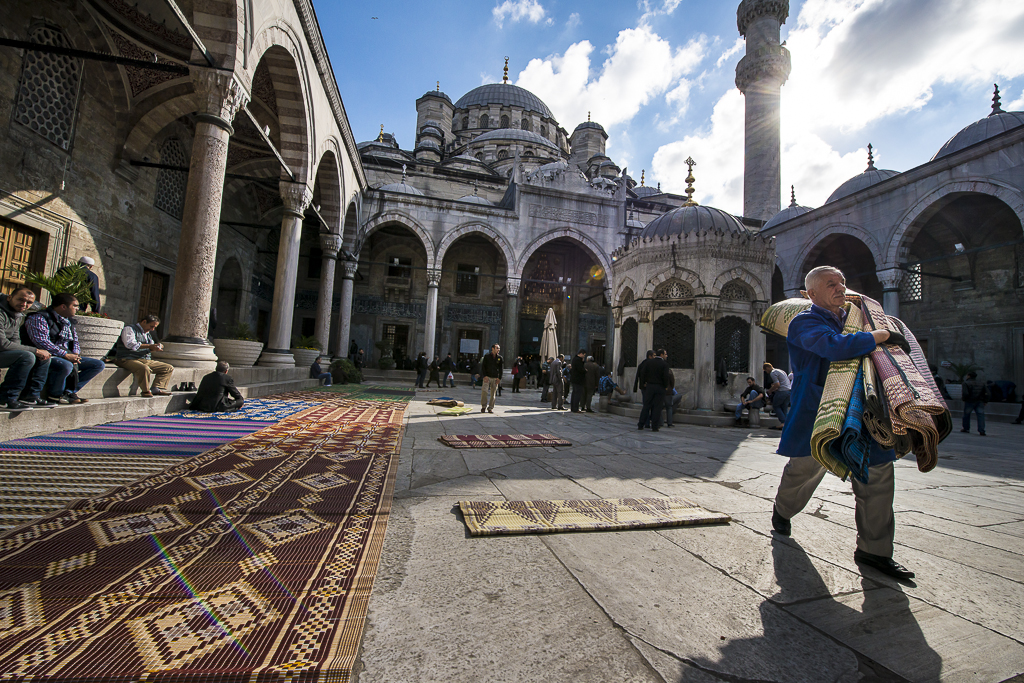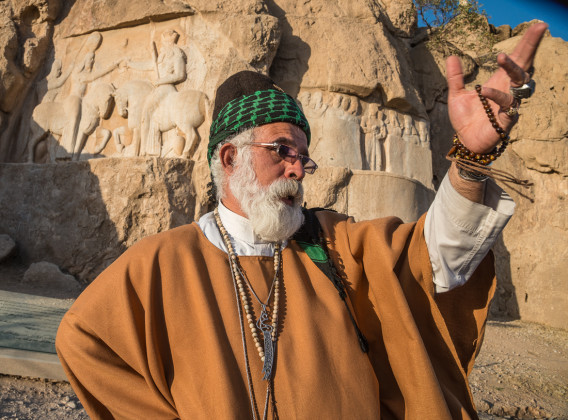On my first morning in Bagan, I watched the sun rise from one of those balloons; the next day I watched the balloons go by from the top of one of those big temples.
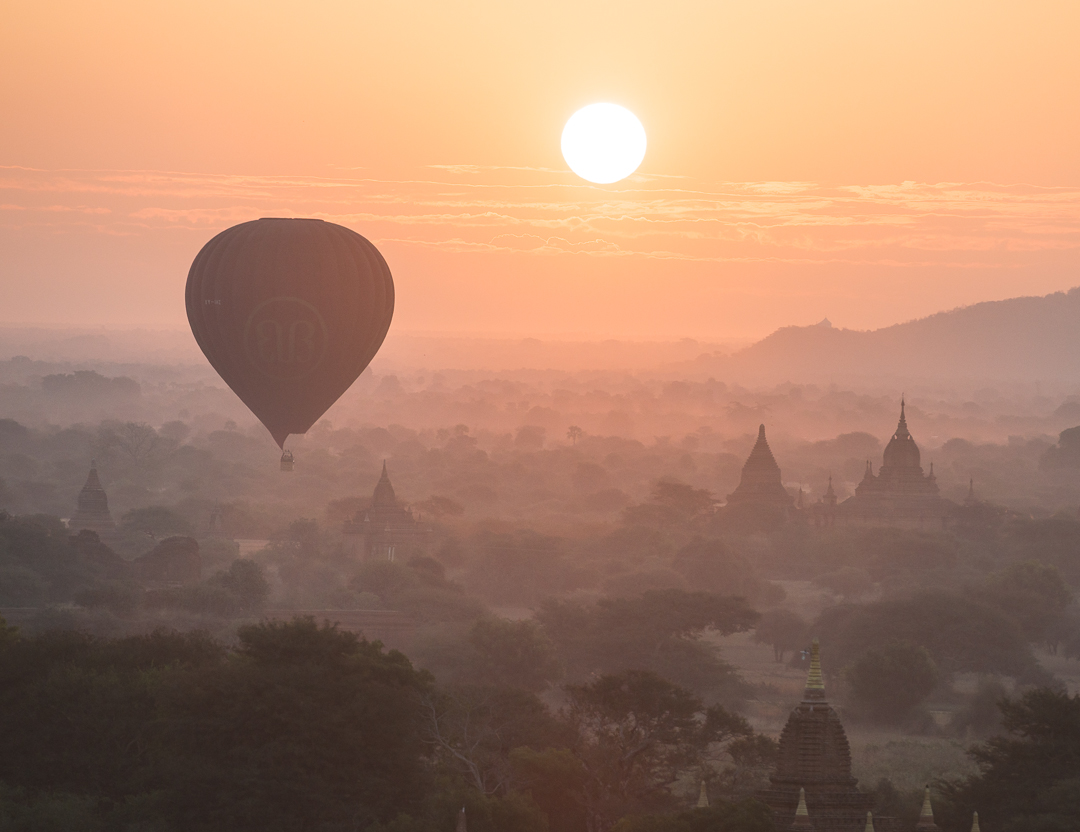
One of the dozens of hot air balloons that fly every morning over Bagan, viewed from atop the 950-year-old Shwesandaw Pagoda.
The Burmese City of Bagan was the capital of the Kingdom of Pagan* in the 9th to 13th Centuries. The people of Pagan built several thousand Buddhist temples and monuments (“stupas”), some smallish and some reaching nearly 20 stories tall. The Mongols (a “horde” of them, no doubt) overran Pagan in the late 1200s. Happily, though, they left the Buddhist monuments largely intact, so thousands of them survive even today.
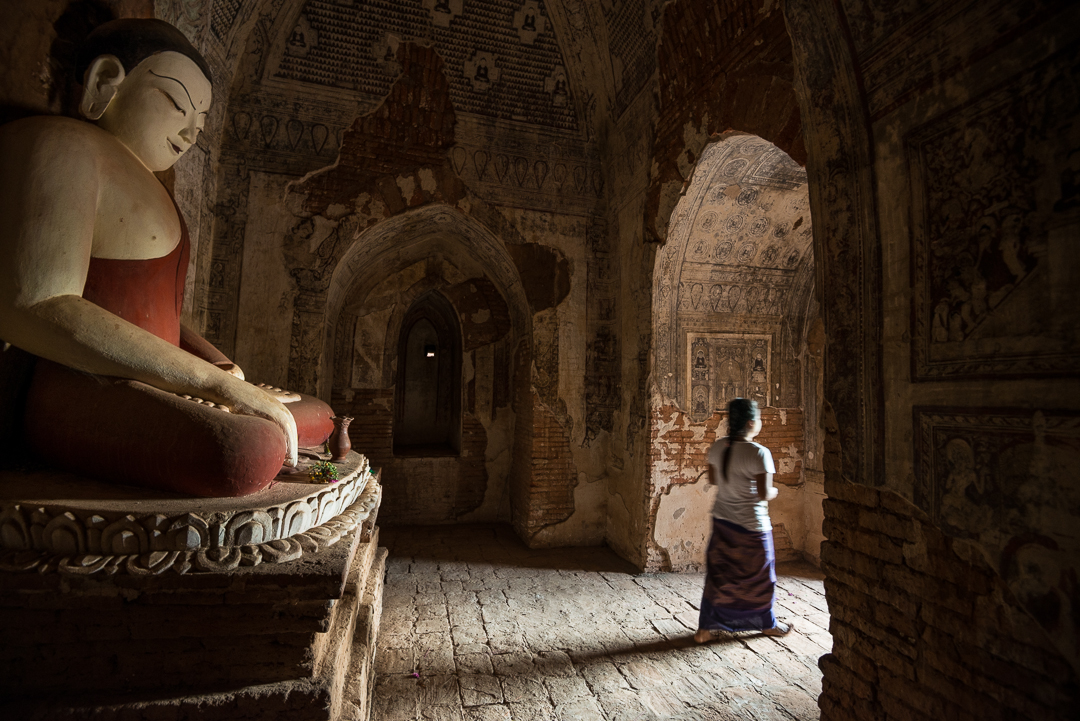
Many Bagan monuments are solid “stupas,” but many are hollow temples like this one, usually with Buddha statues inside. There are thousands of them; I’m not sure this smallish one even has a name.
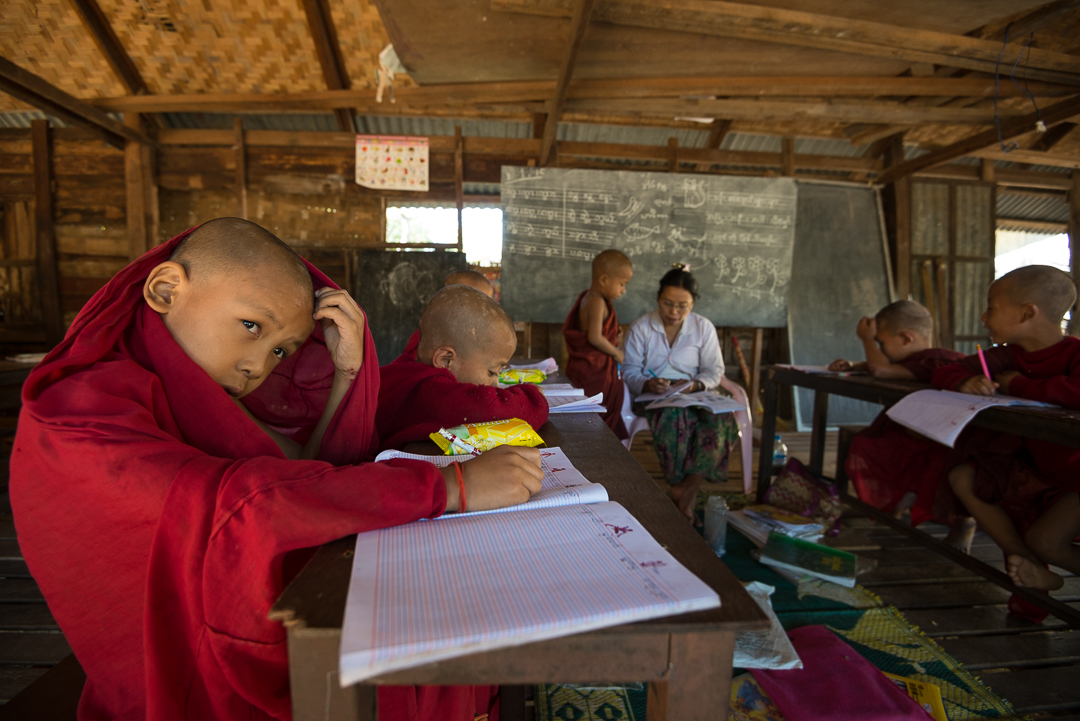
Some of the young monks you see in Buddhist cultures are orphans, who live and go to school at places like the Shwe Gu orphanage and monastery in Bagan.
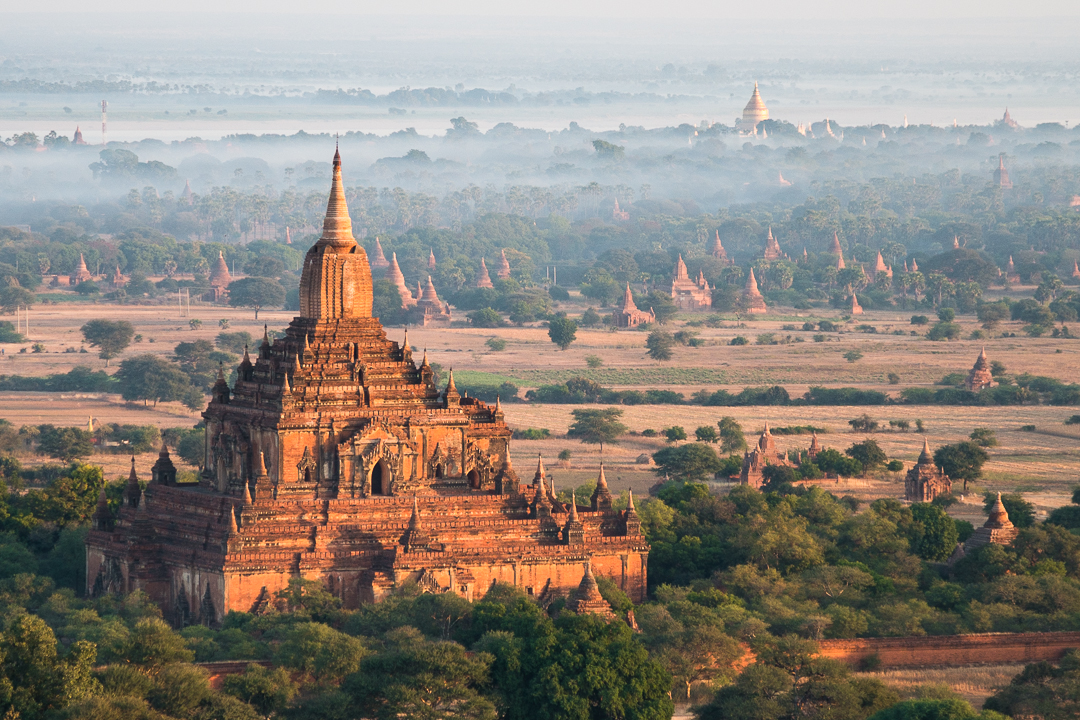
A “fractal” is something with repeating patterns at different scales, so that if you “zoom in” on it, it still tends to look the same. Picture a stock market chart: A typical ten-year chart often looks about like a typical one week chart or a typical one-hour chart. The fractal-like shape of an ocean coastline can look much the same whether you trace the outline of a 100-yard stretch, a 10-mile stretch, or a 1,000-mile stretch. The temples at Bagan made me think of fractals. If you take a broad view, you see huge temples dotting the landscape. But zoom in and you’ll see a similar patterns of smaller temples filling in the gaps. Similarly, the enormous scale of these monuments is all the more impressive when you see the tiny, intricate detail painted on the interior walls of many of the temples.
* As best I can tell, the Asian kingdom of “Pagan” has nothing to do with the “pagan” gods or practices of, e.g., the ancient Romans.
